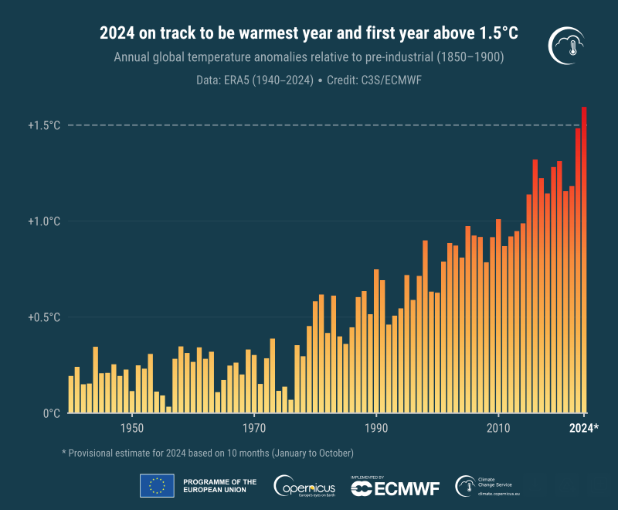CBS News
USDA ban on school lunch fees for low-income families begins in 2027

The U.S. Department of Agriculture announced that students eligible for free or reduced-price school meals cannot be charged processing fees, also known as junk fees, beginning in 2027.
School districts currently work with processing companies to offer cashless payment systems for families. But the companies can charge “processing fees” for each transaction. By law, students who are eligible for reduced price meals cannot be charged more than 30 cents for breakfast and 40 cents for lunch. With processing fees, however, families can end up paying 10 times that amount. Processing companies charge as much as $3.25 or 4% to 5% per transaction, according to a recent report from the Consumer Financial Protection Bureau.
For families with lower incomes who can’t afford to load large sums in one go, processing fees can arrive weekly or even more frequently, increasing costs disproportionately. Families that qualify for free or reduced lunch pay as much as 60 cents per dollar in fees when paying for school lunches electronically, according to the report.
The new Agriculture Department’s policy becomes effective starting in the 2027-2028 school year. With this rule, the USDA will lower costs for families with income under 185% of federal poverty guidelines, which equals $57,720 for a family of four.
“USDA and schools across America share the common goal of nourishing schoolchildren and giving them the fuel they need to learn, grow and thrive,” said Agriculture Secretary Tom Vilsack in a statement Friday. “While today’s action to eliminate extra fees for lower-income households is a major step in the right direction, the most equitable path forward is to offer every child access to healthy school meals at no cost. We will continue to work with Congress to move toward that goal so all kids have the nutrition they need to reach their full potential.”
The decision by the USDA follows a CFPB report that found online school meal payments predominantly affect low-income families. School lunch fees collectively cost families upwards of $100 million each year, according to the report.
The U.S. Department of Agriculture has mandated that school districts inform families of their options since 2017, but even when parents are aware, having to pay by cash or check to avoid fees can be burdensome.
“It’s just massively inconvenient,” said Joanna Roa, 43, who works at Clemson University in South Carolina as a library specialist and has two school-aged children.
Roa said that when her son was in first grade and she saw the $3.25-per-transaction fee for lunch account transactions, she and her husband decided to send him to school with packed lunches instead.
“A dollar here and there, I expected,” she said. “But $3.25 per transaction, especially here in rural South Carolina where the cost of living is a lot lower — as are the salaries — is a lot.”
Roa said packing lunch for two kids every day became a burden in both time and effort for two working parents. For the past two years, thanks to surplus funds, her school district has been providing free school lunches which has changed the equation, but Roa said that could end at any point.
In its review of the 300 largest public school districts in the U.S., the CFPB found that 87% of sampled districts contract with payment processors. Within those districts, the companies charge an average of $2.37 or 4.4% of the total transaction, each time money is added to a child’s account.
While payment companies maintain that school districts can negotiate fees and rates before they agree to contracts, the CFPB found that complex company structures “may insulate companies from competition and make school districts less likely to negotiate.” Just three companies — MySchoolBucks, SchoolCafe, and LINQ Connect — dominate the market, according to the report.
Without the ability to choose which company to work with, “families have fewer ways to avoid harmful practices,” the agency said, “including those that may violate federal consumer protection law.”
___
“The Associated Press receives support from Charles Schwab Foundation for educational and explanatory reporting to improve financial literacy. The independent foundation is separate from Charles Schwab and Co. Inc. The AP is solely responsible for its journalism.”
CBS News
European agency says 2024 is “virtually certain” to be warmest year on record

Climate scientists working at the European Union’s Copernicus Climate Change Service have announced that 2024 is “virtually certain” to be the warmest year on record.
According to its ERA5 dataset, the agency said it was “virtually certain” that the annual temperature for 2024 will be more than 1.5 degrees Celsius above the pre-industrial level, and it will likely be more than 1.55 C above.
For decades, scientists have warned that average global temperatures should not get any higher than 1.5 C above pre-industrial times in order to prevent deadly weather conditions that could impact people worldwide.
The world has already warmed considerably and has seen the effects with back-to-back heat waves, droughts and unprecedented flooding and hurricane events. The way farmers are able to grow food has already started to shift, and with 1.5 to 2 degrees Celsius of warming, agricultural yields will decline and sea levels could rise up to 10 feet, researchers have found. Experts say the oceans will also be warmer, fueling more powerful hurricanes and threatening ecosystems that are fundamental for economies and help protect areas from inclement weather.
Copernicus Climate Change Service /ECMWF
“This marks a new milestone in global temperature records and should serve as a catalyst to raise ambition for the upcoming Climate Change Conference, COP29,” said Samantha Burgess, deputy director of the Copernicus Climate Change Service, in a statement.
The Copernicus Climate Change Service said the average global temperature anomaly for the first 10 months of 2024 (January to October) is 0.71 C above the 1991-2020 average, which is the highest on record for this period and 0.16 C warmer than the same period in 2023.
“The average temperature anomaly for the rest of 2024 would have to drop to almost zero for 2024 to not be the warmest year,” the agency said.
The agency added that given that 2023 was 1.48°C above the pre-industrial level according to its ERA5 model, it was also likely that the annual temperature for 2024 will be more than 1.55°C above.
European temperatures were above average over almost all of the continent, Copernicus found. Outside Europe, temperatures were most above average over northern Canada, and well-above average over the central and western United States, northern Tibet, Japan and Australia.
Copernicus Climate Change Service /ECMWF
The agency also said Arctic sea ice reached its fourth lowest monthly extent for October, at 19% below average. Sea ice extent is a measure of the surface area of the ocean which is covered by ice.
Sea ice concentration anomalies were well below average in all peripheral seas of the Arctic Ocean, particularly in the Barents Sea, Canadian Archipelago, and north of Svalbard, the agency said.
Antarctic sea ice extent was 8% below average in October, which was the second-lowest such average behind only October 2023, when it was 11% below average, Copernicus said. Those numbers continued “a series of large negative anomalies observed throughout 2023 and 2024.”
The Copernicus Climate Change Service, which is funded by the EU, routinely publishes monthly climate bulletins reporting on changes observed in global surface air and sea temperatures, sea ice cover and hydrological variables. All the reported findings are based on computer-generated analyses and the ERA5 dataset, which uses billions of measurements from satellites, ships, aircraft and weather stations around the world.
In a report published last month, the United Nations warned that the world is now in “climate crunch time” as greenhouse gases — which trap heat in the atmosphere that warms global temperatures and fuels more extreme weather events — have hit “unprecedented levels.”
“The numbers paint a clear picture,” the U.N. said. “To keep emissions below the critical 1.5-degree target set in Paris in 2015, countries must cut emissions by 42 percent overall by 2030 and achieve a 57 percent reduction by 2035.”
CBS News
Netanyahu calls Trump’s win a “huge victory”

Watch CBS News
Be the first to know
Get browser notifications for breaking news, live events, and exclusive reporting.
CBS News
Criminal cases against Trump will be “brought to a halt,” says election law expert

Watch CBS News
Be the first to know
Get browser notifications for breaking news, live events, and exclusive reporting.











